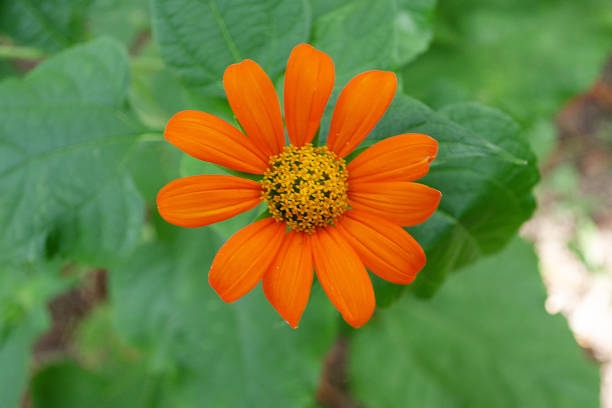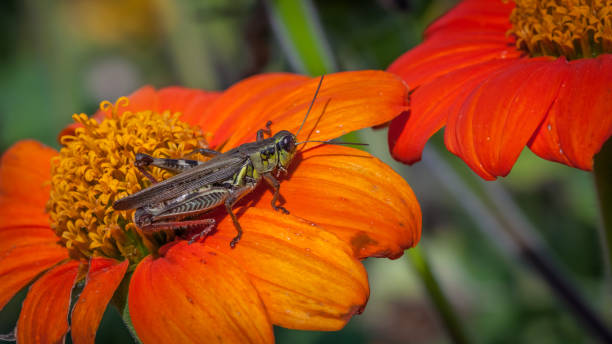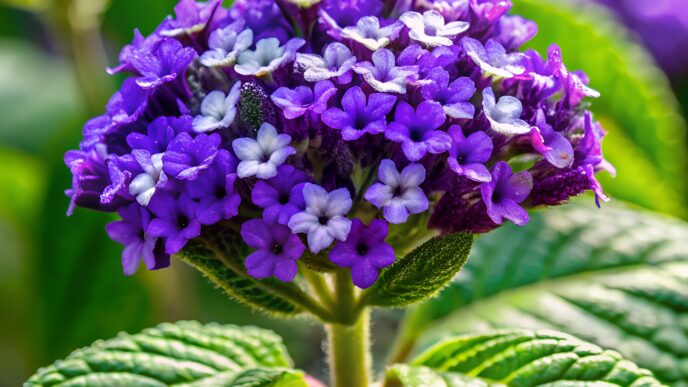Tithonia, commonly known as the Mexican Sunflower (Tithonia rotundifolia), is a striking annual that lights up gardens with its fiery orange-red blooms. Growing up to 4–6 feet tall, it makes an impressive backdrop in borders, attracts pollinators like butterflies and hummingbirds, and thrives in poor soils where other plants may struggle. If you’re looking for a hardy, low-maintenance flower that delivers bold color all summer long, Tithonia is a perfect choice.
Why Grow Mexican Sunflowers?
- Brilliant color: Bright orange-red blooms stand out.
- Pollinator magnet: Loved by butterflies, bees, and hummingbirds.
- Tough & resilient: Thrives in heat, drought, and poor soil.
- Tall & dramatic: Great for borders or backdrops.
- Easy to grow: Minimal care once established.

Step 1: Planting Tithonia
When to Plant
- Sow seeds directly outdoors after the last frost.
- In cooler regions, start seeds indoors 6–8 weeks before frost ends.

Soil & Location
- Prefers well-drained, sandy or loamy soil.
- Needs full sun (at least 6–8 hours daily).
- Avoid overly rich soil—too much fertility can reduce blooms.
Spacing
- Space plants 18–24 inches apart for good airflow and growth.
Step 2: Caring for Tithonia
Watering
- Water regularly until established, then tolerate drought well.
- Deep, infrequent watering promotes strong root growth.
Fertilizing
- Usually doesn’t need fertilizer.
- If soil is very poor, apply a balanced fertilizer once during the season.
Pruning & Support
- Deadhead spent flowers to extend blooming.
- In windy areas, tall plants may need staking.

Step 3: Pests & Problems
- Generally pest-free.
- May occasionally attract aphids or spider mites, but damage is minimal.
- Overwatering can lead to root rot.
Step 4: Harvesting & Uses
- Excellent as a cut flower with a long vase life.
- Works well in wildflower gardens and pollinator patches.
- Reseeds easily if flowers are left to mature.
FAQs About Tithonia
Q1: Is Tithonia annual or perennial?
It’s an annual in most regions but self-seeds readily for the next year.
Q2: How tall does Tithonia grow?
Most varieties reach 4–6 feet, with some giant types exceeding 8 feet.
Q3: Does it bloom all summer?
Yes, Tithonia blooms continuously from mid-summer until frost.
Q4: Can Tithonia grow in containers?
Smaller varieties can, but tall types need space and are better in the ground.
Final Thoughts
Tithonia, the Mexican Sunflower, is a show-stopping annual that thrives on neglect, bringing fiery color and attracting pollinators to your garden. With its bold blooms, tall stature, and easy-growing nature, it’s a fantastic addition for gardeners looking to add drama and wildlife to their landscapes. Plant them in spring, give them sunshine, and enjoy months of dazzling flowers.














